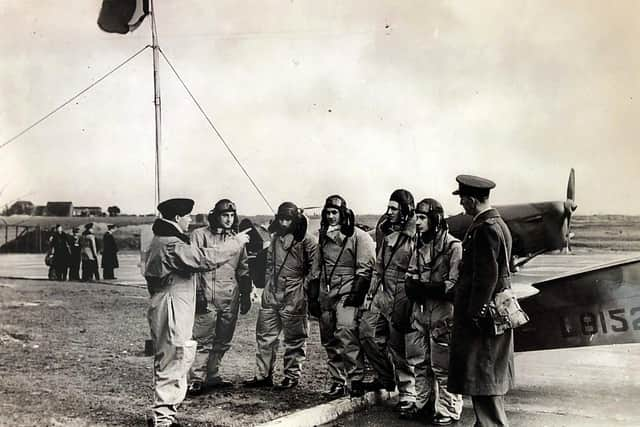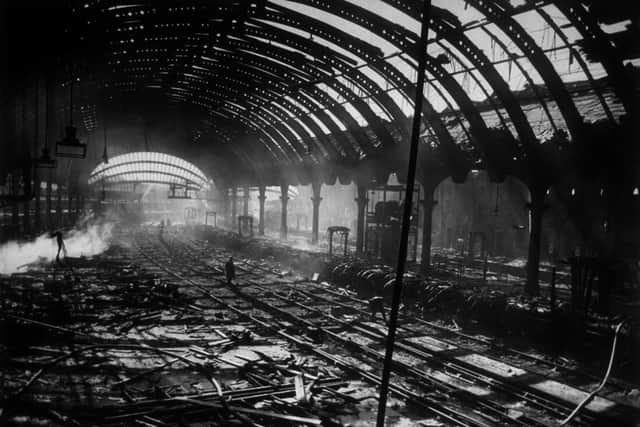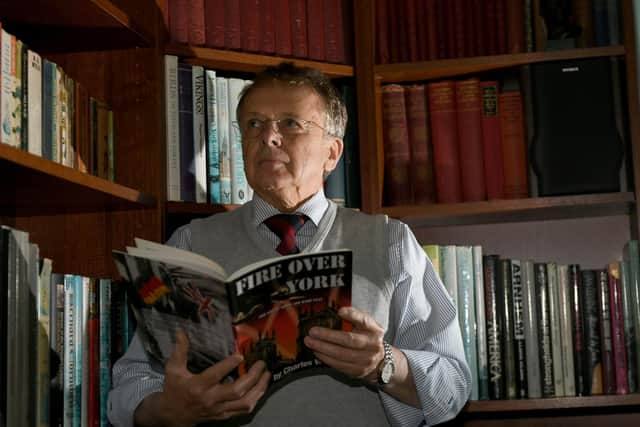The story of a young French fighter pilot who flew to York's rescue during the Second World War
His story, as a 23-year-old who by pure chance saved the city of York from further devastation in the Baedeker Blitz, is one that is well told as inspiration for countless schoolchildren.
Now, newly shared logbooks detail his own account of what happened that night in April 1942, when he had flown "flat out" at 400mph to arrive in time to defend the city from German bombs.
Advertisement
Hide AdAdvertisement
Hide AdThese accounts, shared by his son Loïc Mahé with new imagery, detail how he accidentally came across a Luftwaffe bomber headed for the Rowntrees factory where munitions were stored.


By pure serendipity he had overflown the pilot, who then dropped his bombs indiscriminately instead, preventing an explosion which could have destroyed the city centre.
Ian Reed, who has brought the findings together as director of the Allied Forces Heritage Group (AFHG), said the logbooks shed new light on a strength of fervour behind Mahé's actions, and his dogged resolve to do all he could.
"It's just an extraordinary episode," said Mr Reed, who will this year be awarded both an MBE for his Anglo French commemorative work with the AFHG as well as the Legion d'Honneur by President Macron, in an incredibly rare double accolade.
Advertisement
Hide AdAdvertisement
Hide Ad"He was one of many fighter pilots who were up in the air that night, he wasn't on his own. But the enthusiasm, as we read his logbooks, shows that he put the aircraft into full throttle.


"He pushed that aircraft of his absolutely flat out to stop them bombing York. He saved a huge part of the city. Had it been hit the devastation of the city would have been immense."
A civilian pilot in Nantes, Mahé had joined the French Air Force when war broke out but, following devastation at Dunkirk, was forbidden from fighting under armistice agreements.
Following several failed escape attempts, he stole an aeroplane with comrades, heading to Britain to join Royal Air Force Fighter Command and retraining on Hawker Hurricanes.
Advertisement
Hide AdAdvertisement
Hide AdBased in Lincolnshire, his squadron flew convoy protection missions and, as Luftwaffe bombers crossed the Yorkshire coast shortly after 2.30am on April 29, 1942, Mahé was called into action.


For an incredible 90 minutes bombers had circled the city, targeting York Railway Station, and engulfing the historic Guildhall in flames, destroying thousands of homes.
Mahé, among the RAF crews racing towards the glare of fire in the sky some 60 miles north, later outlined how he brought down a bomber "with a taste of his own medicine".
Curving to engage a second aircraft, he had caused it to suddenly dive, narrowly flying over another Ju88 bomber headed for the Rowntrees sweet factory and its secret munitions store.
Advertisement
Hide AdAdvertisement
Hide AdThis Luftwaffe bomber pilot said later he “was simply aiming at the biggest factory” when suddenly Mahé flashed overhead with his guns blazing.
The German broke off the attack, dropping his bombs to lighten his load and escape. Had he hit his target it is believed the explosion could have flattened much of the centre of the city.
"It was only an accident that he flew over the top of the bomber," reflected Mr Reed, a former director for 21 years of the Yorkshire Air Museum at Elvington near York.
"It was this action that prevented vast amounts of damage.
"If he had been caught he would have been executed," added Mr Reed. "Yet he still carried on, to fight against the Germans and to liberate his own country.
Advertisement
Hide AdAdvertisement
Hide Ad"It shows an incredible selfless determination and courage, in flying flat out into the city to stop the German aircraft bombers."
Some 84 tonnes of bombs fell on York that night, resulting in over 300 casualties and damage to some 9,500 homes as well as the famous medieval Guildhall and church of St Martin-le-Grand.
Children at St Wilfrid's School in York, learning about the raid in 2012, had written to the Lord Mayor to ask if Mahé could be remembered in some way. With York Civic Society and the Yorkshire Air Museum a blue plaque was unveiled opposite the remains of St Martin-le-Grand in Coney Street in 2014 by the French Ambassador.
Mahé was killed in a fighter jet accident over Belgium in 1962 at the age of 42.
Comment Guidelines
National World encourages reader discussion on our stories. User feedback, insights and back-and-forth exchanges add a rich layer of context to reporting. Please review our Community Guidelines before commenting.